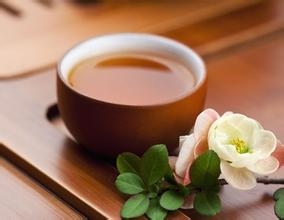Arabica Coffee Bean Flavor description Taste quality characteristics introduction to Grinding and Calibration treatment
Arabica Coffee Bean Flavor description Taste quality characteristics introduction to Grinding and Calibration treatment
Arabica coffee accounts for 75% of the world's coffee production, and its quality varies widely, from good to bad. In recent years, a few countries (such as India) have devoted themselves to improving the quality of robusta coffee. They have planted robusta in high altitude areas, given the most careful care, and carefully washed the coffee. As a result, they get very good quality robusta coffee beans! Top Robusta beans are not cheap either, getting rid of the old impression that Robusta are cheap beans! Therefore, the quality of coffee beans can no longer be judged by the crude and outdated ancient judgment standard of "is it Arabica beans"?
There is another important difference: the amount of "Caffeine" (C8H10N4O2). Robusta coffee contains about twice as much caffeine as Arabica coffee, which is why drinking some canned coffee is prone to palpitations and insomnia.
After seeing so many differences between Arabica Coffee and Robusta Coffee, we must finally emphasize:
"Arabica coffee" is not the same as "good coffee" and "Robusta" coffee is not absolutely cheap coffee. "Arabica" coffee requires a cumbersome process of hand picking, selection and fine processing, so it is the most expensive in the world. The best coffee beans are grown in Arabica. "Robusta" coffee is usually used to produce instant coffee and canned coffee because of its low cost. A small number of better quality "Robusta" coffee are also used in mixed coffee (with Arabica coffee) espresso beans.
Other differences
Arabica coffee has a varied and broad potential flavor. Arabica coffee produced in different regions, different elevations and different climates usually has its own characteristics and can show a completely different flavor. "Arabica" coffee smells like grass when it is not roasted. After proper roasting, it shows "fruity" (medium-light roasting) and "caramel sweetness" (deep roasting). Generally speaking, it has a better aroma and flavor than Robusta beans.
"Robusta" coffee usually has an ordinary, rigid and pungent flavor, and because the vast majority of robusta around the world are grown in low-altitude areas (author's note: as of May 2008, only India has rare high-altitude, high-quality, washed Robusta coffee beans). The flavor produced by different regions and different climates is not very different, relatively lack of personality. When unbaked, it smells like raw peanuts, and the taste of cheap robusta coffee beans is usually between "wheat tea" (medium-light baking) and "rubber tire flavor" (deep baking). It is difficult to show fine flavor.

Important Notice :
前街咖啡 FrontStreet Coffee has moved to new addredd:
FrontStreet Coffee Address: 315,Donghua East Road,GuangZhou
Tel:020 38364473
- Prev

The taste of Honduran coffee the method of altitude treatment I describe the quality of grinding scale
Honduran coffee taste altitude treatment method I describe the grinding scale quality introduction to the production of coffee, the geographical conditions of Honduras is no less than its neighboring coffee-producing countries such as Guatemala and Nicaragua, Honduras has 280000 hectares of coffee plantations, mainly small coffee plantations, most of which are less than 3.5ha, these coffee plantations account for the whole
- Next

Introduction of Yega Xuefei ARICHA Coffee Bean Flavor description method for Grinding scale varieties
Yega Xuefei ARICHA coffee bean flavor description method grinding scale variety introduction this unique taste of coffee beans the best way to drink is cold extract. The coffee powder is put into cold water, soaked statically for 12-20 hours, and then filtered into coffee liquid by filter paper. under the condition of low temperature and long contact with coffee powder, only small molecular flavor substances are extracted, for example.
Related
- Detailed explanation of Jadeite planting Land in Panamanian Jadeite Manor introduction to the grading system of Jadeite competitive bidding, Red bid, Green bid and Rose Summer
- Story of Coffee planting in Brenka region of Costa Rica Stonehenge Manor anaerobic heavy honey treatment of flavor mouth
- What's on the barrel of Blue Mountain Coffee beans?
- Can American coffee also pull flowers? How to use hot American style to pull out a good-looking pattern?
- Can you make a cold extract with coffee beans? What is the right proportion for cold-extracted coffee formula?
- Indonesian PWN Gold Mandrine Coffee Origin Features Flavor How to Chong? Mandolin coffee is American.
- A brief introduction to the flavor characteristics of Brazilian yellow bourbon coffee beans
- What is the effect of different water quality on the flavor of cold-extracted coffee? What kind of water is best for brewing coffee?
- Why do you think of Rose Summer whenever you mention Panamanian coffee?
- Introduction to the characteristics of authentic blue mountain coffee bean producing areas? What is the CIB Coffee Authority in Jamaica?

